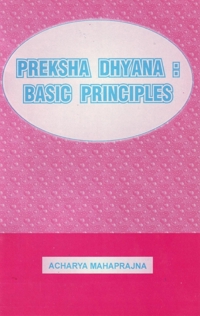It is impossible to canalise and concentrate the mental functioning if the breath is not adequately regulated. Breath is essential for metabolic functioning of the body. It is also linked with conscious mind. Since mind is ever restless, it is extremely difficult to steady the wandering mind directly. An efficient and easy way to control mental activity is concentrated perception of breath—Švãsa-prekṣã.
Proper regulation of respiration by the conscious mind results in the development of the controlled activity of the mind. To stop the restlessness of the mind, and canalise its functioning, it is essential to be aware of breathing. Shallow, hasty and irregular (spasmodic) breathing must first be regulated to be deep, slow, calm and rythmic. Even in Kãyotsarga, breathing is not stopped, but is made subtle.
Deep, slow and rhythmic breathing is an essential condition for regulating mental process. Very slow inhalation and complete exhalation (by the use of diaphragm) is called "dīrgha švãsa"—deep breathing or diaphragmatic breathing.
Complete awareness of breathing and nothing else but breathing is the basis of Švãsa-prekṣã. Attention can be kept focussed on a single point in the respiratory tract, e.g. nostrils or it can travel the entire tract during inhalation as well as exhalation. Various facets of breathing, such as movement of the diaphragm, rate of breathing and depth of breathing can conveniently become the object of Švãsa-prekṣã.
Švãsa-prekṣã can be practised in two ways viz. dīrgha švãsa and samavrtti švãsa.
Dīrgha Švãsa Preksã
As already explained above, Dīrgha švãsa is slow and complete exhalation and deep inhalation. The first step in this process is to regulate the rate of breathing by reducing the number of breaths per minute. Normally a healthy adult's rate of breathing is 15/17 breaths per minute (b.p.m.). By practice of diaphragmatic breathing, this rate can be drastically reduced. Even casual practice can easily bring it down to 10/12 b.p.m. And further regular practice can reduce the rate to 6, 4 or even 2 or 1 b.p.m.
Regulation of breath, reduction in its rate, and the rhythm results in steadying the mind. Simultaneously, urges and impulses, emotions and passions and their impelling forces—the primal drives—all become amenable to control. When the breath is shallow and its rate high, primal drives and passions are aroused, strengthening the urges and emotions. Quick breathing acts as a vehicle for all these distortions. One can easily pacify the passions by regulating the breath. If one slows down the breath-rate and commences rhythmic breathing, the passion forces would at once be retarded. This is because they are deprived of the vehicle, and without a transport they cannot make much headway. A practitioner of meditation would, in due course, be able to perceive in advance the onslaught of rising passions, and thus will be prepared to nullify their attack by resorting to 'dīrgha švãsa'. The rising passion would then begin to subside. Thus by blunting the sharpness of their attack, a sãdhaka saves himself from being the victim of the dreadful urges and emotions.
Breath is a reality of the present moment. Practice of Švãsa-prekṣã leads the sãdhaka to live equanimously and impartially. He will also get rid of tension as a side benefit.
As stated above, Prekṣã Dhyãna is the technique of seeing one's own self. Breath is the gate-way to the self (consciousness). To commence the internal trip, one must pass through the main gate-way of breath. And when mind and breath become inseparable companions, the journey begins. In theory breath is a part and parcel of the self; and so one can realize the goal of reaching the self via the breath. In practice, seeing oneself simply means perception of all aspects of breath by the conscious mind.
Samavṛtti Švãsa Prekṣã
Like Dīrgha Švãsa Prekṣã, Samavṛtti Švãsa Prekṣã is also an important process of this meditational system. Here breath is exhaled through one (say, left) nostril and inhaled through the other (right). Then exhaling through the right, it is inhaled through the left. Throughtout the process, the perceptive mind is closely linked with the breath. As in Dīrgha Švãsa Prekṣã, breath is regulated to be rhythmic. In due course by the practice of this, one can develop the inherent capacities of the subconscious mind such as extrasensory perception, clairvoyance etc.
 Acharya Mahaprajna
Acharya Mahaprajna

